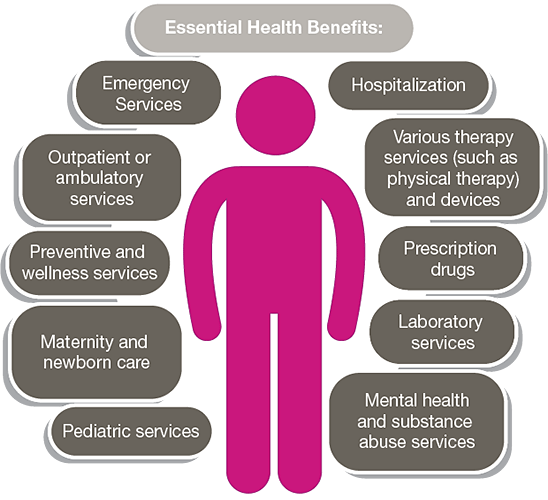The Of Annuities In Toccoa, Ga
Table of ContentsIndicators on Home Owners Insurance In Toccoa, Ga You Should KnowThe Basic Principles Of Affordable Care Act (Aca) In Toccoa, Ga Automobile Insurance In Toccoa, Ga for DummiesThe Only Guide to Automobile Insurance In Toccoa, Ga

1 and 3. 2 (Commercial Insurance in Toccoa, GA), for further information. New immigrants account for a considerable percentage of individuals without health insurance. One analysis has actually connected a significant part of the recent growth in the dimension of the U - https://jstinsurance1.carrd.co/.S. uninsured populace to immigrants who arrived in the nation between 1994 and 1998 (Camarota and Edwards, 2000)
Medical insurance coverage is a crucial element in many versions that portray access to wellness treatment. The partnership in between wellness insurance coverage and access to care is well developed, as documented later on in this phase. Although the relationship in between medical insurance and health and wellness end results is neither direct nor basic, a comprehensive scientific and health services study literature web links medical insurance protection to enhanced accessibility to care, much better top quality, and improved individual and population wellness status.
What Does Automobile Insurance In Toccoa, Ga Mean?
The issues faced by the underinsured remain in some respects comparable to those faced by the without insurance, although they are generally less extreme. Uninsurance and underinsurance, nonetheless, include distinctly various plan problems, and the approaches for addressing them might differ. Throughout this research and the five reports to adhere to, the primary emphasis gets on persons with no medical insurance and therefore no assistance in paying for wellness care beyond what is readily available with charity and safeguard organizations.

Medical insurance is a powerful aspect affecting invoice of care due to the fact that both clients and physicians react to the out-of-pocket price of solutions. Medical insurance, nevertheless, is neither necessary neither sufficient to obtain access to clinical solutions. Nonetheless, the independent and direct result of health insurance policy coverage on accessibility to health solutions is well developed.
Others will acquire the healthcare they need even without health insurance coverage, by spending for it expense or seeking it from service providers that supply care totally free or at very subsidized prices - Health Insurance in Toccoa, GA. For still others, medical insurance alone does not make certain invoice of treatment due to the fact that of various other nonfinancial obstacles, such as a lack of health and wellness care companies in their neighborhood, minimal access to transportation, illiteracy, or etymological and social differences
The Greatest Guide To Annuities In Toccoa, Ga
Official study concerning uninsured populations in the United States dates to the late 1920s and early 1930s when the Board on the Price of Treatment created a series of records about financing doctor workplace brows through and hospitalizations. This issue became prominent as the numbers of medically indigent climbed during the Great Anxiety.
Empirical studies continually sustain the link in between access to care and boosted health and wellness end results (Bindman et al., 1995; Starfield, 1995). Having a routine resource of care can be taken into consideration a predictor of access, instead than a direct step of it, when wellness results are themselves made use of as gain access to indications.
5 Easy Facts About Life Insurance In Toccoa, Ga Shown

Although emergency situation departments are represented as a costly and unsuitable site of health care services, several without insurance clients seek treatment in emergency divisions because they are sent out there by other health care carriers or have nowhere else to go. Emergency situation treatment experts argue that the country's emergency situation departments not just work as companies of last resource yet are an important access point right into the health treatment system (O'Brien et al (https://papaly.com/categories/share?id=0772776548eb4e6e8a489053cc1ded29)., 1999)
Chapter 2 offers an overview of how employment-based medical insurance, public programs and specific insurance plan operate and connect to give substantial however incomplete coverage of the united state populace. This includes a review of historic patterns and public laws influencing both public and personal insurance, a conversation of the communications among the various kinds of insurance, and an exam of why individuals move from one program to an additional or finish up with no coverage.Chapter 3 manufactures existing info to get to a composite summary of the uninsured: What features do people without insurance coverage typically share? Where do the uninsured live? The phase also provides info concerning the risk of being or coming to be without insurance: Just how does the possibility of being uninsured change depending upon selected attributes, such as racial and ethnic identity, rural or city residency, and age? What are the chances for certain populations, such as racial and ethnic minorities, country citizens, and older working-age persons, of being uninsured? Just how does the possibility of being without insurance adjustment over a lifetime? Along with identifying the likelihood of being without insurance in regards to a single dimension, such as sex, age, race, job condition, or geographic area, Phase 3 Presents the results of multivariate evaluations that provide an even more useful representation of the variables that contribute to the chances of being uninsured.